Transform your front yard into a year-round sanctuary with evergreen landscaping that provides continuous beauty, structure, and curb appeal. These versatile plants offer four-season interest while creating cohesive designs that complement any architectural style. From formal hedges to naturalistic arrangements, evergreen plantings establish the backbone of successful landscape design. Whether you prefer low-maintenance native species or sculptural topiaries, the right evergreen combination can dramatically enhance your home's exterior while supporting local wildlife and reducing maintenance requirements.
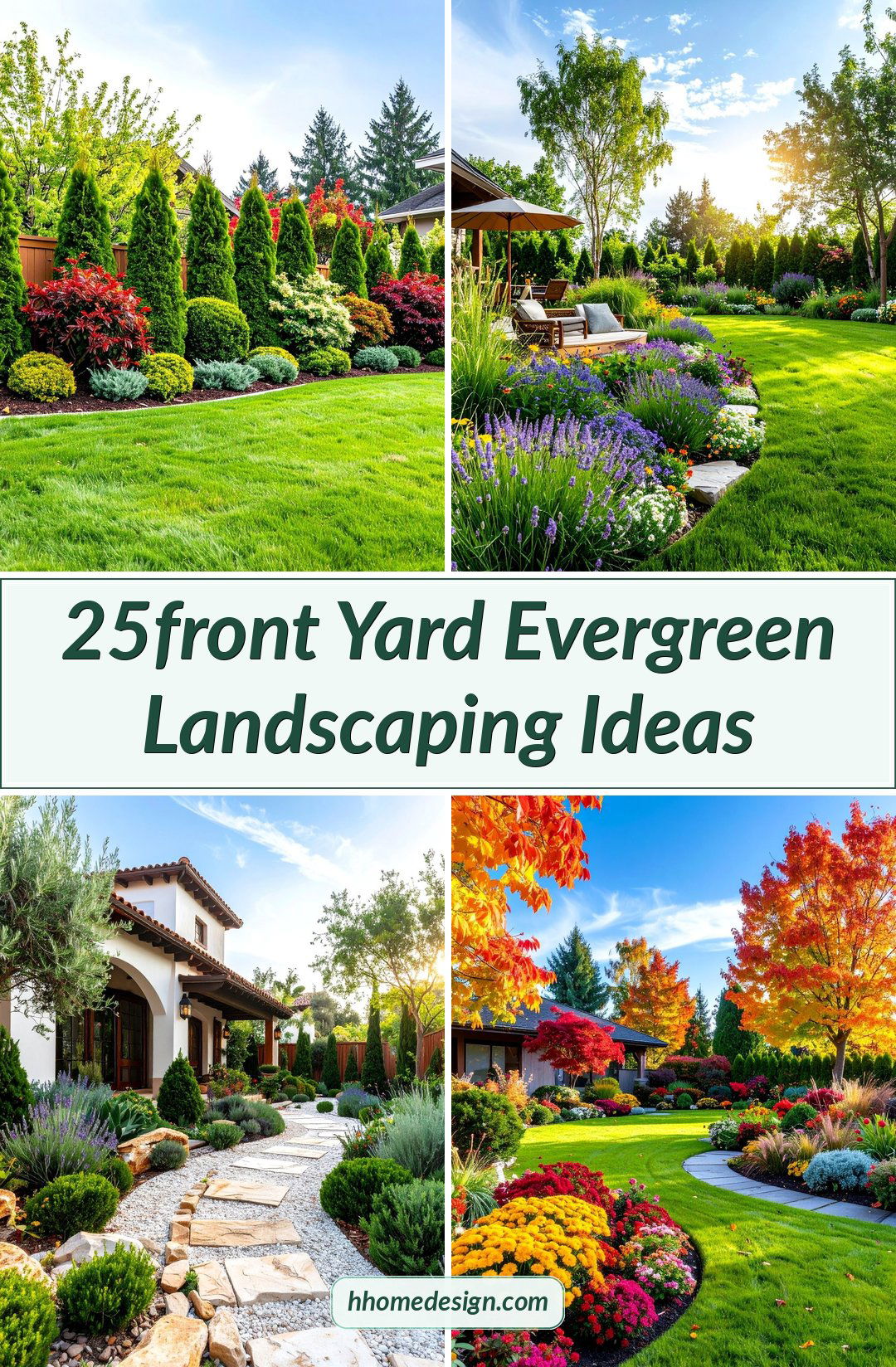
1. Classic Boxwood Foundation Border

Establish a timeless foundation planting with neatly trimmed boxwood hedges that frame your home's entrance and windows. This formal approach uses compact evergreen shrubs in graduated heights to create clean lines and year-round structure. Plant dwarf boxwood varieties along walkways and larger specimens near corners for balanced proportions. The dense foliage provides excellent screening while maintaining a sophisticated appearance that complements traditional and contemporary architecture. Regular shaping maintains the crisp geometric forms that define this classic style. This design works exceptionally well with brick, stone, or painted siding, creating a polished foundation that enhances curb appeal through every season while requiring minimal seasonal maintenance once established.
2. Layered Evergreen Privacy Screen

Create natural privacy with a multi-layered evergreen screen that combines tall background trees, medium shrubs, and low groundcovers for complete coverage. This design uses arborvitae or cypress as the backbone, supported by holly or rhododendron in the middle layer, and finished with spreading junipers or pachysandra groundcover. The varied heights and textures create visual interest while blocking unwanted views from multiple angles. Strategic spacing allows each plant to reach its natural form while maintaining density for privacy. This approach works particularly well along property boundaries or to screen service areas. The layered structure provides habitat for birds while creating a lush, natural buffer that feels organic rather than constructed.
3. Modern Geometric Evergreen Design

Embrace contemporary landscaping with geometric arrangements of evergreen plants that emphasize clean lines and architectural forms. This style features precisely planted rows of columnar evergreens like Sky Pencil holly or Blue Arrow juniper, creating vertical emphasis and modern sophistication. Rectangular planting beds with sharp edges contain the greenery, while gravel or decomposed granite pathways provide contrast and definition. The repetition of identical plants creates rhythm and order, while strategic lighting highlights the architectural qualities after dark. This minimalist approach works exceptionally well with modern homes, emphasizing the building's lines while providing year-round color and structure. Maintenance focuses on preserving the geometric integrity through selective pruning and edge maintenance.
4. Native Evergreen Woodland Garden

Design a naturalistic front yard that celebrates local ecology using native evergreen species adapted to your region's climate and soil conditions. This approach combines indigenous conifers, broadleaf evergreens, and native grasses to create a landscape that requires minimal irrigation and supports local wildlife. Plants are arranged in irregular groupings that mimic natural forest patterns, with larger specimens providing canopy and smaller plants filling understory roles. This design philosophy emphasizes sustainability while creating beautiful year-round displays that change subtly with seasons. Native evergreens typically require less maintenance, resist local pests and diseases, and provide important habitat for beneficial insects and birds. The resulting landscape feels authentic to its place while offering unique beauty.
5. Cottage Garden Evergreen Backdrop
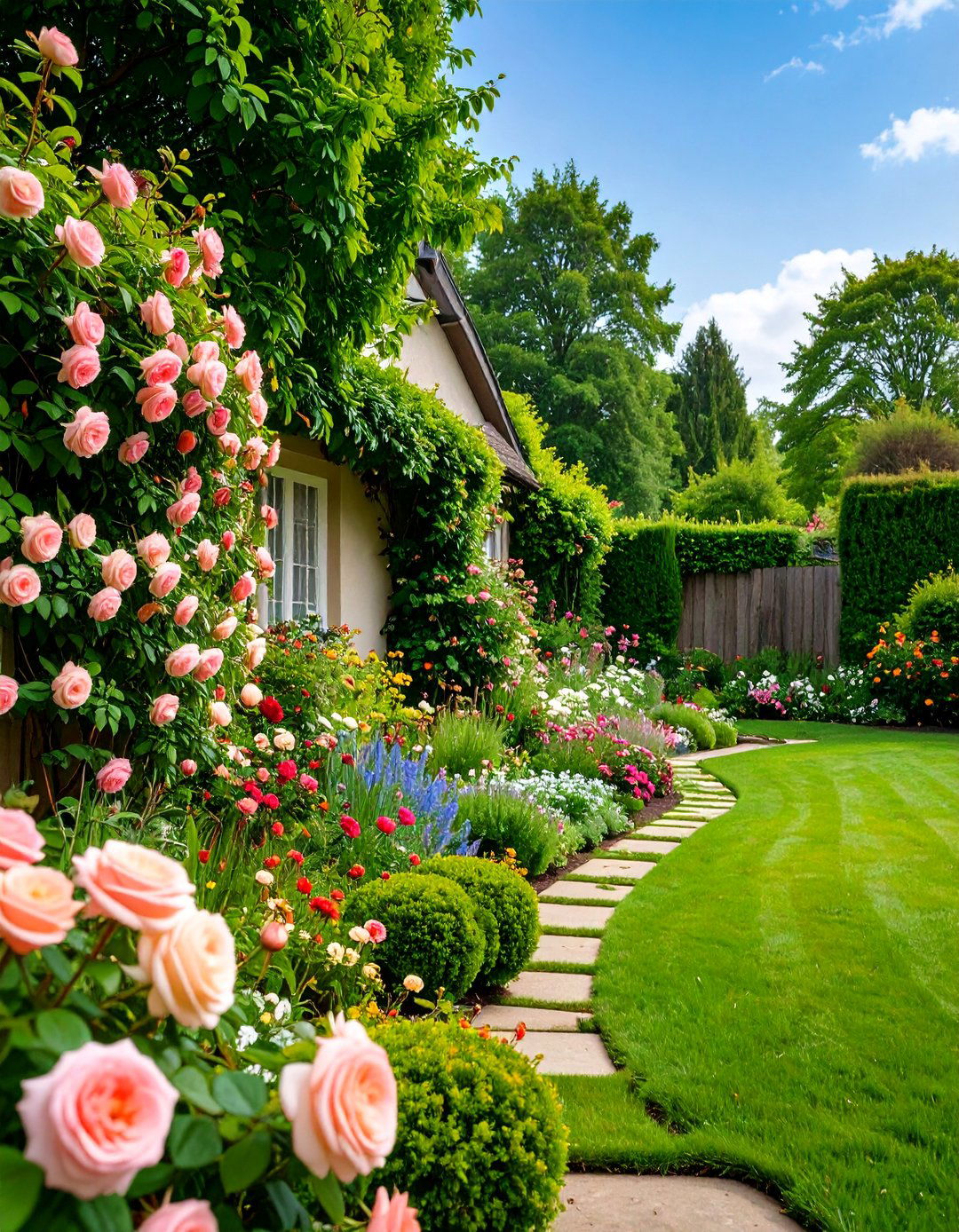
Establish evergreen structure as the foundation for a romantic cottage garden style that combines year-round plants with seasonal flowering additions. Dense evergreen hedges or specimen plants provide the permanent framework, while perennials, annuals, and climbing plants add seasonal color and texture. This design uses informal evergreen arrangements that appear natural rather than strictly controlled, creating a relaxed atmosphere that invites exploration. The evergreen backbone ensures winter interest and provides support for climbing roses or clematis during growing seasons. Mixed plantings create the characteristic cottage garden abundance while evergreen anchors prevent the design from appearing chaotic. This style works particularly well with traditional home styles and creates an English garden atmosphere.
6. Drought-Tolerant Evergreen Landscape
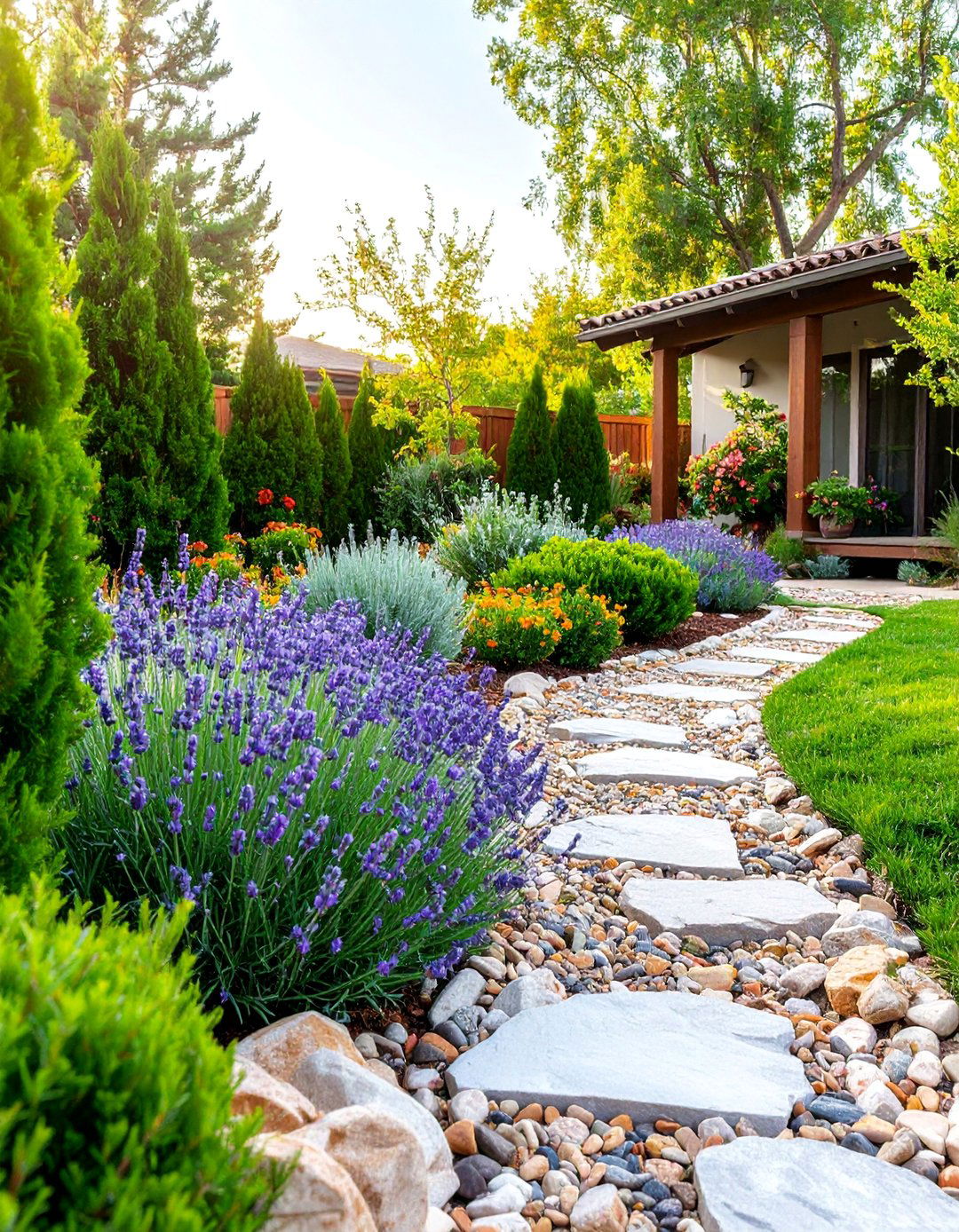
Create water-wise beauty with drought-tolerant evergreen plants that thrive in challenging conditions while maintaining lush appearance. This design features Mediterranean herbs like rosemary and lavender, combined with drought-adapted conifers and succulents for diverse textures and colors. Mulching with decorative stones or bark conserves moisture while providing attractive contrasts to the evergreen foliage. Strategic plant placement takes advantage of natural drainage patterns and microclimates, reducing irrigation needs significantly. This approach particularly benefits regions with water restrictions or naturally dry conditions. The resulting landscape requires minimal maintenance once established, while providing year-round interest through varied evergreen forms, colors, and occasional flowering. Smart irrigation systems can supplement natural rainfall efficiently when needed.
7. Formal Evergreen Parterre Garden
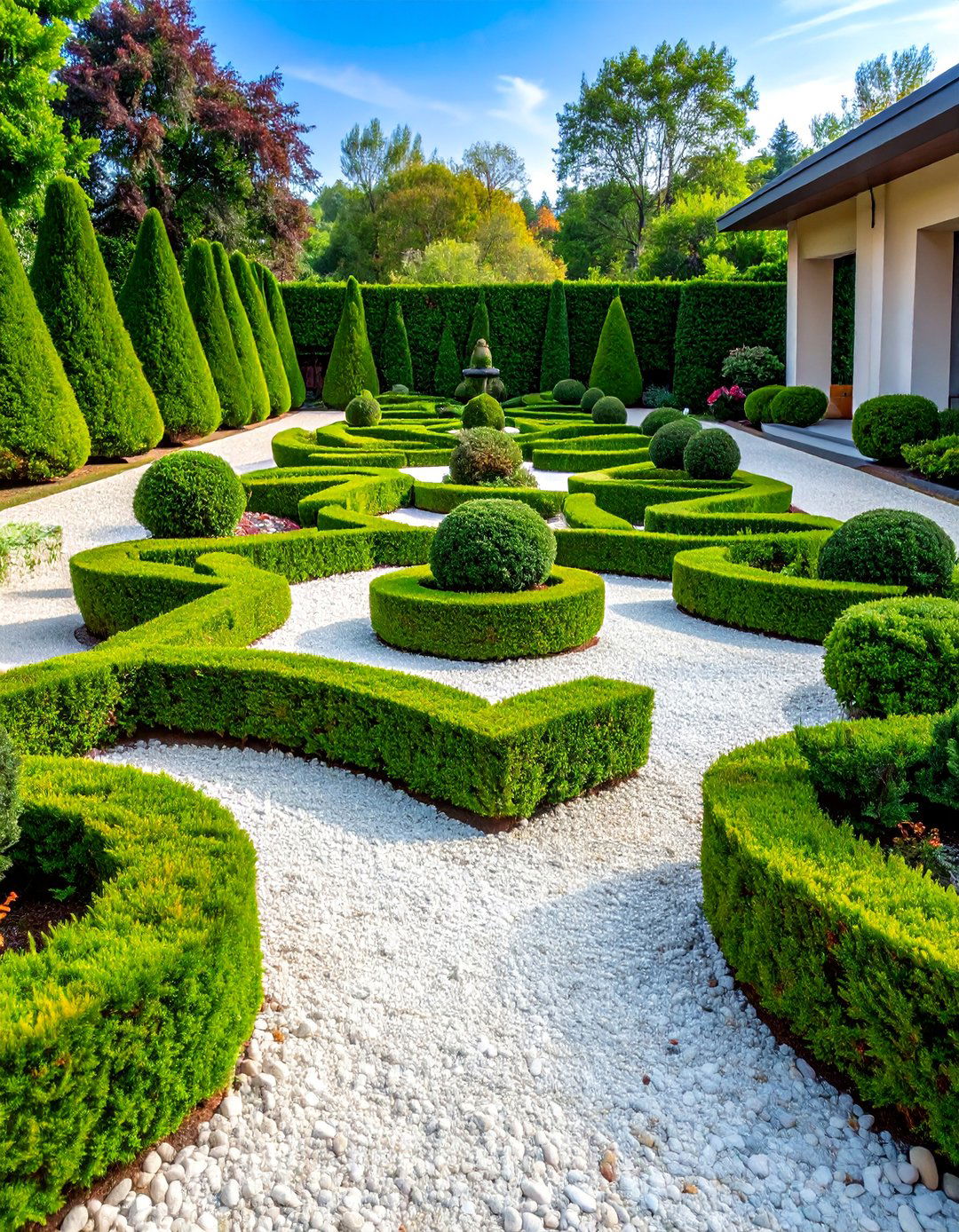
Design an elegant formal garden using evergreen hedges to create intricate patterns and defined planting areas reminiscent of classical European gardens. Low-growing boxwood or yew hedges form geometric shapes and borders, while taller evergreen specimens provide vertical anchors and background structure. This sophisticated approach requires precise planning and regular maintenance to preserve the formal patterns and clean lines. Gravel or brick pathways define the circulation through the parterre, while seasonal plantings within the evergreen frames add color and interest. This design style works exceptionally well with formal architecture and creates a sense of grandeur and historical connection. The evergreen framework provides year-round structure that remains beautiful even when seasonal elements are dormant or removed.
8. Japanese-Inspired Evergreen Garden
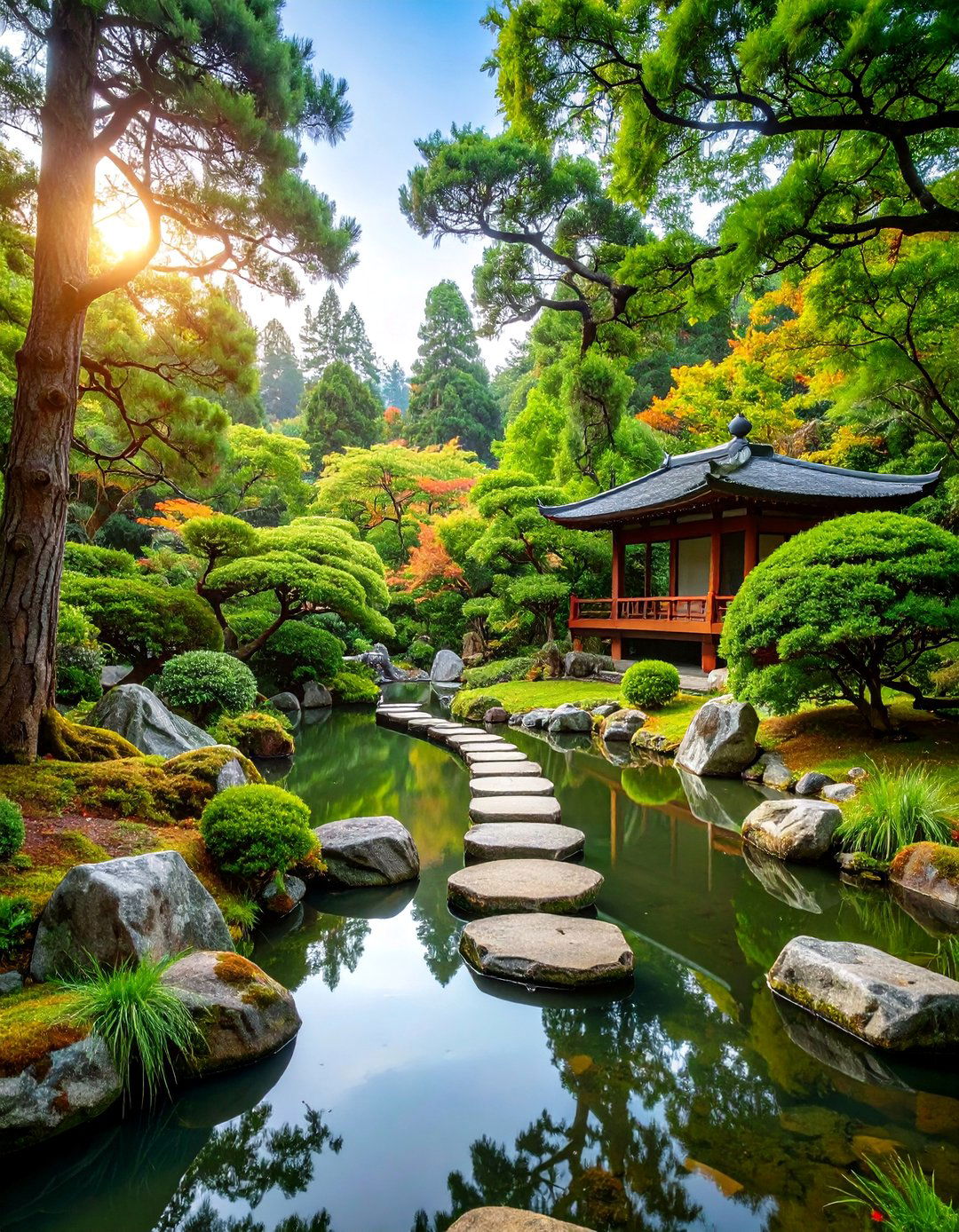
Create serene beauty with carefully selected evergreen plants arranged according to Japanese garden principles of balance, simplicity, and natural harmony. This design emphasizes the unique characteristics of individual specimens, using plants like Japanese maple, pine, and ornamental grasses to create contemplative spaces. Asymmetrical groupings and careful attention to negative space allow each plant to display its natural form and character. Stone elements, water features, or carefully raked gravel complement the evergreen plantings while reinforcing the peaceful atmosphere. This style requires thoughtful plant selection and precise placement to achieve the desired sense of tranquility and balance. Regular but minimal maintenance preserves the natural appearance while preventing overgrowth that could disturb the carefully composed scenes.
9. Evergreen Rock Garden Oasis
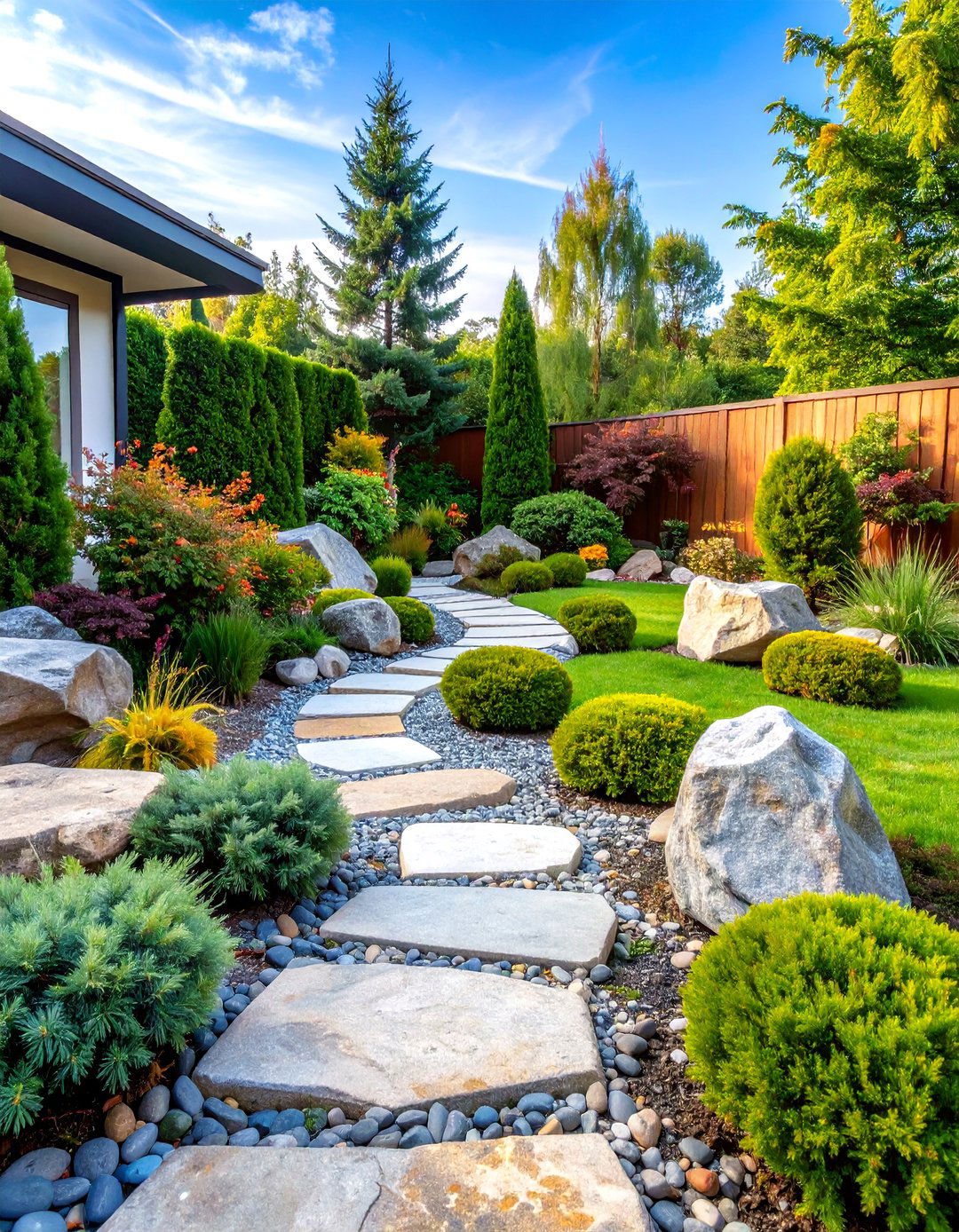
Combine evergreen plants with natural stone formations to create a dramatic landscape that thrives in challenging conditions while providing year-round interest. This design uses dwarf conifers, alpine plants, and stone-loving evergreens arranged among boulders and gravel to create a mountain-like atmosphere in your front yard. The rocky substrate provides excellent drainage for plants that prefer drier conditions, while the varied elevations create microclimates for different species. This approach works particularly well on slopes or in areas with poor soil, transforming challenging sites into attractive features. The combination of plant textures and stone creates visual interest throughout the year, while the low-maintenance nature appeals to busy homeowners. Strategic placement of accent rocks enhances the natural appearance.
10. Mixed Evergreen and Ornamental Grass Display
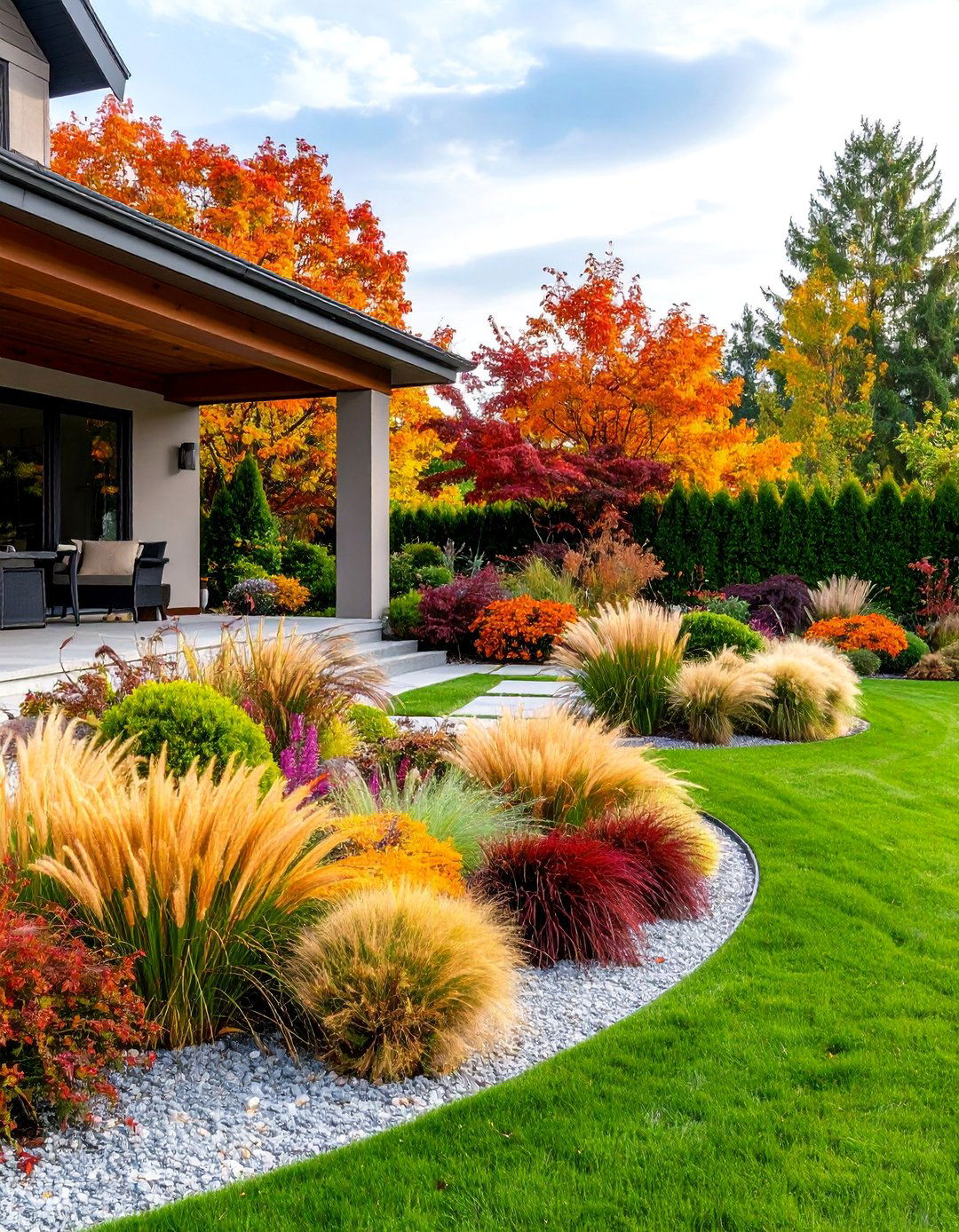
Combine the permanent structure of evergreen shrubs with the dynamic movement and seasonal interest of ornamental grasses for a contemporary landscape that changes throughout the year. This design uses evergreen anchors to provide stability while grasses add softness, movement, and seasonal color transitions. The contrast between rigid evergreen forms and flowing grass textures creates visual tension and interest that works well in modern landscape design. Different grass species provide varying heights, colors, and seed heads that extend seasonal interest well into winter. This combination requires careful selection to ensure compatible growing conditions and maintenance needs. The resulting landscape provides habitat for beneficial insects and birds while creating a naturalistic appearance that feels both structured and wild.
11. Evergreen Container Garden Entrance
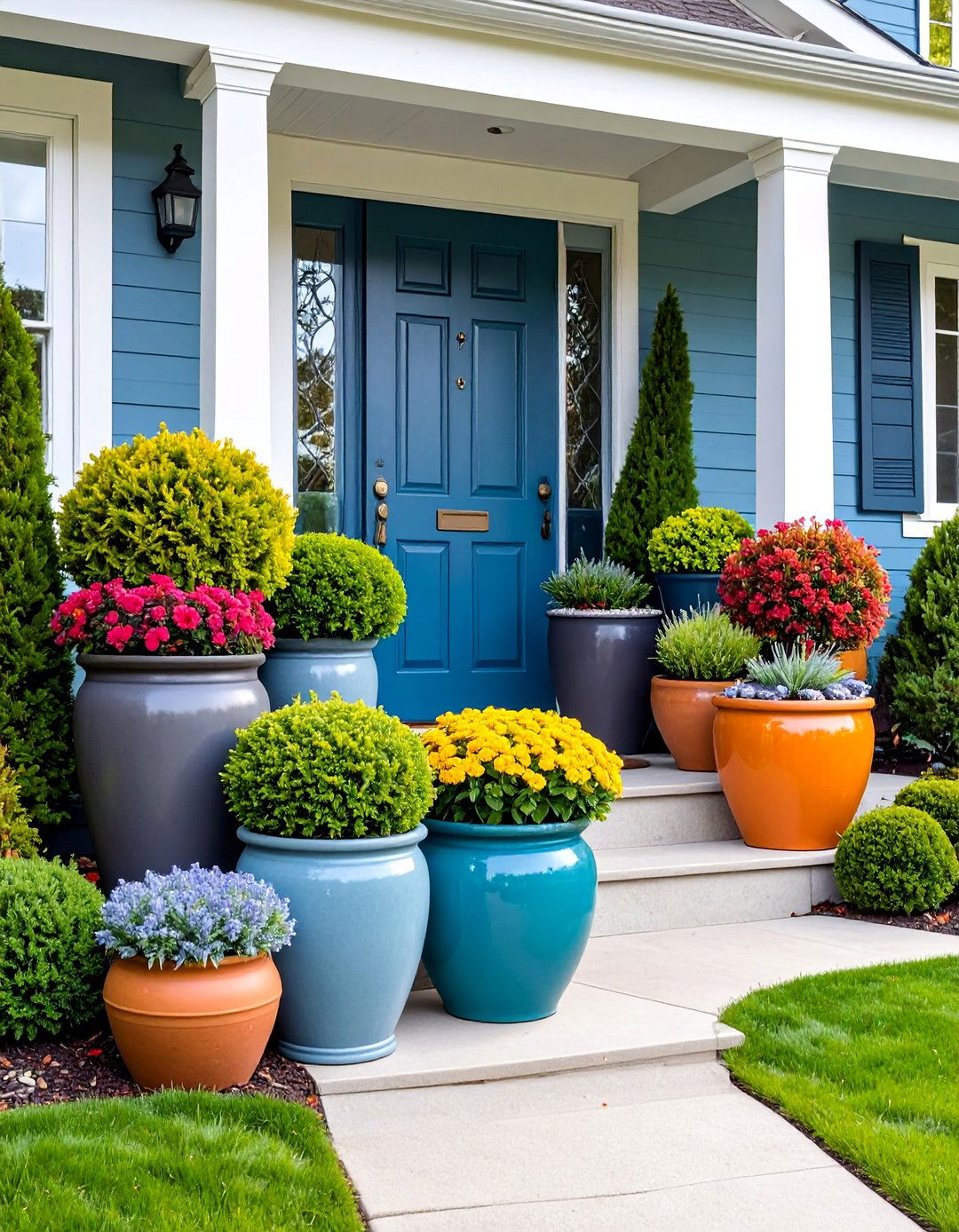
Design a flexible entrance display using evergreen plants in decorative containers that can be rearranged seasonally while maintaining year-round impact. This approach allows for creativity with different pot sizes, materials, and arrangements while providing the permanence of evergreen structure. Large containers with specimen evergreens anchor the design, while smaller pots with seasonal additions provide color and interest. This method works particularly well for renters, small spaces, or areas with challenging soil conditions. Container groupings can be modified for holidays, seasons, or special events while the evergreen base remains constant. Quality containers become decorative elements themselves, allowing for coordination with architectural features and personal style preferences. Proper drainage and container sizing ensure healthy plant growth and longevity.
12. Naturalistic Evergreen Meadow
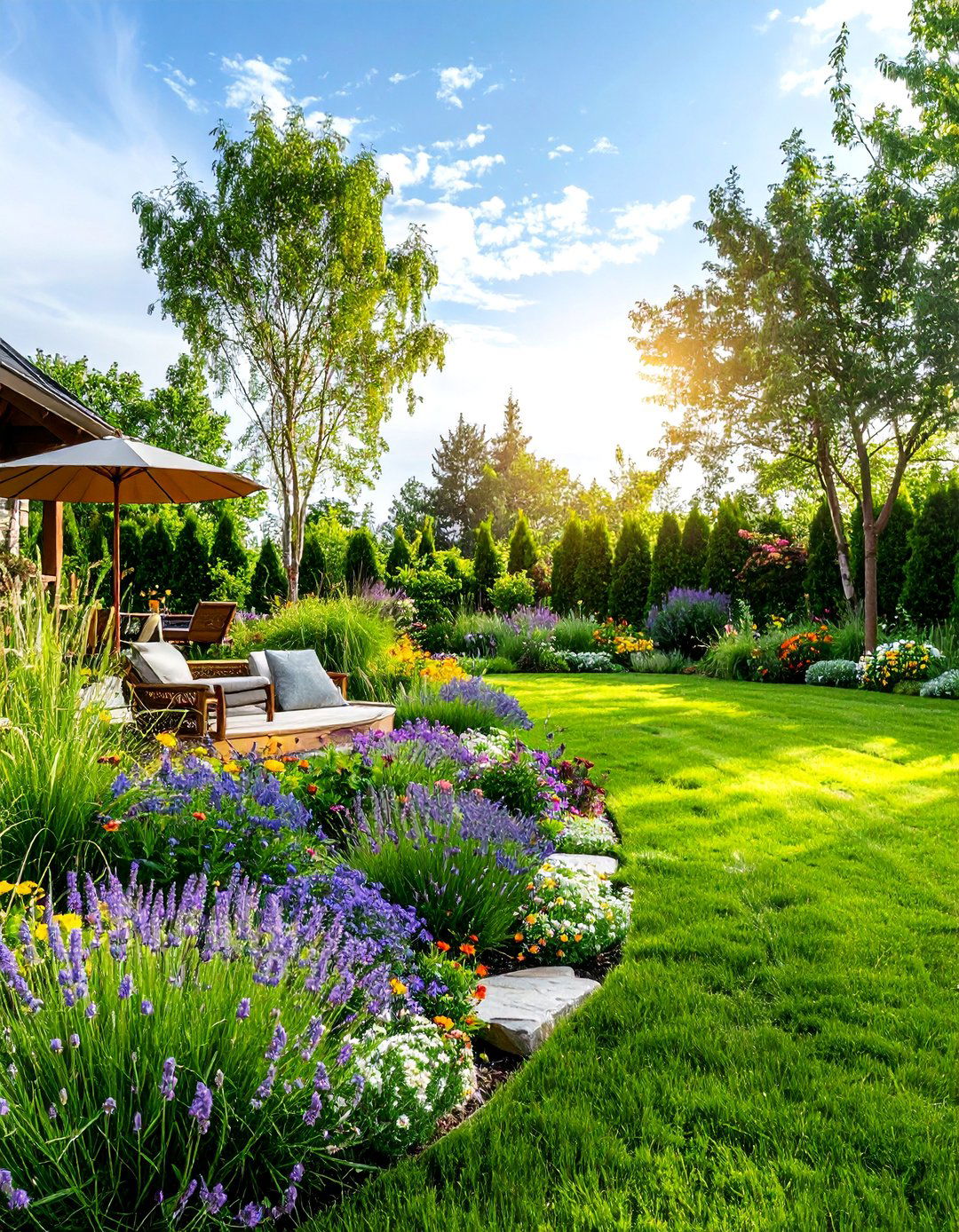
Create a low-maintenance landscape that mimics natural meadow patterns using native evergreen grasses, wildflowers, and scattered evergreen shrubs or small trees. This design emphasizes natural plant communities and seasonal changes while reducing traditional lawn areas and maintenance requirements. Plants are allowed to self-seed and spread naturally within defined boundaries, creating an evolving landscape that changes subtly over time. This approach particularly benefits wildlife by providing diverse habitats and food sources throughout the year. The informal arrangement requires less intensive management than formal gardens while creating unique beauty that reflects local ecology. Strategic placement of evergreen anchors provides structure and winter interest, while the overall design remains dynamic and naturalistic. This style works well with contemporary architecture and sustainable landscaping goals.
13. Evergreen Topiary Showcase

Feature sculptural evergreen plants pruned into artistic forms that serve as living sculptures and focal points in your front yard landscape. This design emphasizes the artistic potential of evergreen plants through careful shaping and maintenance of boxwood, yew, or privet specimens. Topiary forms can range from simple geometric shapes to complex figures, depending on skill level and design preferences. These living sculptures provide year-round interest and demonstrate the gardener's skill and dedication to the craft. Supporting plantings should remain relatively simple to allow the topiary elements to command attention as the primary design features. This approach works well in formal settings and creates a sense of European garden tradition and sophistication. Regular maintenance is essential to preserve the shapes and ensure continued healthy growth of the sculptural elements.
14. Evergreen Hillside Terracing

Transform sloping front yards with terraced evergreen plantings that prevent erosion while creating dramatic landscape architecture. This design uses retaining walls or natural stone terraces to create level planting areas filled with evergreen plants suited to different elevation zones. Upper terraces might feature drought-tolerant species, while lower areas accommodate plants requiring more moisture. The terraced structure creates multiple viewing angles and opportunities for diverse plant combinations within a unified design framework. This approach effectively manages drainage and erosion while maximizing planting space on challenging terrain. Each terrace level can feature different evergreen themes or color combinations while maintaining overall design coherence. The resulting landscape provides significant visual impact while solving practical problems associated with steep slopes and water management.
15. Seasonal Color Evergreen Framework

Establish a permanent evergreen structure that supports rotating seasonal color displays throughout the year while maintaining consistent form and presence. This design uses evergreen shrubs and trees as the backbone, with designated spaces for bulbs, annuals, and perennials that provide changing color displays. The evergreen framework ensures the landscape remains attractive during dormant seasons while providing support and background for seasonal elements. This approach allows for creative expression through seasonal plantings while maintaining professional appearance year-round. The evergreen structure guides the eye and provides scale and proportion for temporary elements that might otherwise appear scattered or uncoordinated. Careful planning ensures that seasonal transitions enhance rather than compete with the permanent evergreen elements, creating a sophisticated and dynamic landscape.
16. Evergreen Hedge Room Dividers

Create outdoor rooms and defined spaces using evergreen hedges as natural walls that provide privacy and structure while maintaining garden views and air circulation. This design uses medium-height evergreen hedges to separate different functional areas of the front yard, such as entry courtyards, seating areas, or service zones. The living walls provide privacy without completely blocking views, creating intimate spaces within the larger landscape. Different hedge heights and species can define various enclosure levels, from low borders that suggest boundaries to tall screens that provide complete privacy. This approach works particularly well in larger front yards where multiple functions need accommodation within a unified design. The evergreen hedges provide year-round structure while supporting different planting themes within each defined space.
17. Mediterranean Evergreen Escape

Design a water-wise landscape inspired by Mediterranean climates using drought-tolerant evergreen plants that provide lush appearance with minimal irrigation requirements. This style features aromatic herbs like rosemary, sage, and thyme, combined with evergreen shrubs and trees adapted to dry conditions. The design emphasizes silvery foliage colors and varied textures that reflect heat and create cooling effects in the landscape. Gravel mulches and stone accents complement the plant palette while conserving moisture and providing attractive contrasts to the evergreen foliage. This approach works particularly well in warm climates or areas with water restrictions, creating beautiful landscapes that thrive with minimal input. The aromatic plants provide sensory interest beyond visual appeal, creating gardens that engage multiple senses while requiring little maintenance once established.
18. Evergreen Wildlife Habitat Garden

Create a front yard landscape that prioritizes wildlife support while maintaining attractive appearance through careful selection of evergreen plants that provide food, shelter, and nesting sites. This design features berry-producing evergreens like holly and juniper, combined with dense shrubs that offer protected nesting areas for birds. Native evergreen species support local insect populations that serve as food sources for birds and other wildlife. The design includes varied plant heights and densities to accommodate different wildlife species and their specific habitat requirements. Water features or birdbaths enhance the wildlife value while adding visual and auditory interest to the landscape. This approach creates beautiful gardens that actively support local ecosystems while providing year-round interest for homeowners. The resulting landscape requires thoughtful maintenance that balances human aesthetic preferences with wildlife habitat needs.
19. Architectural Evergreen Statement
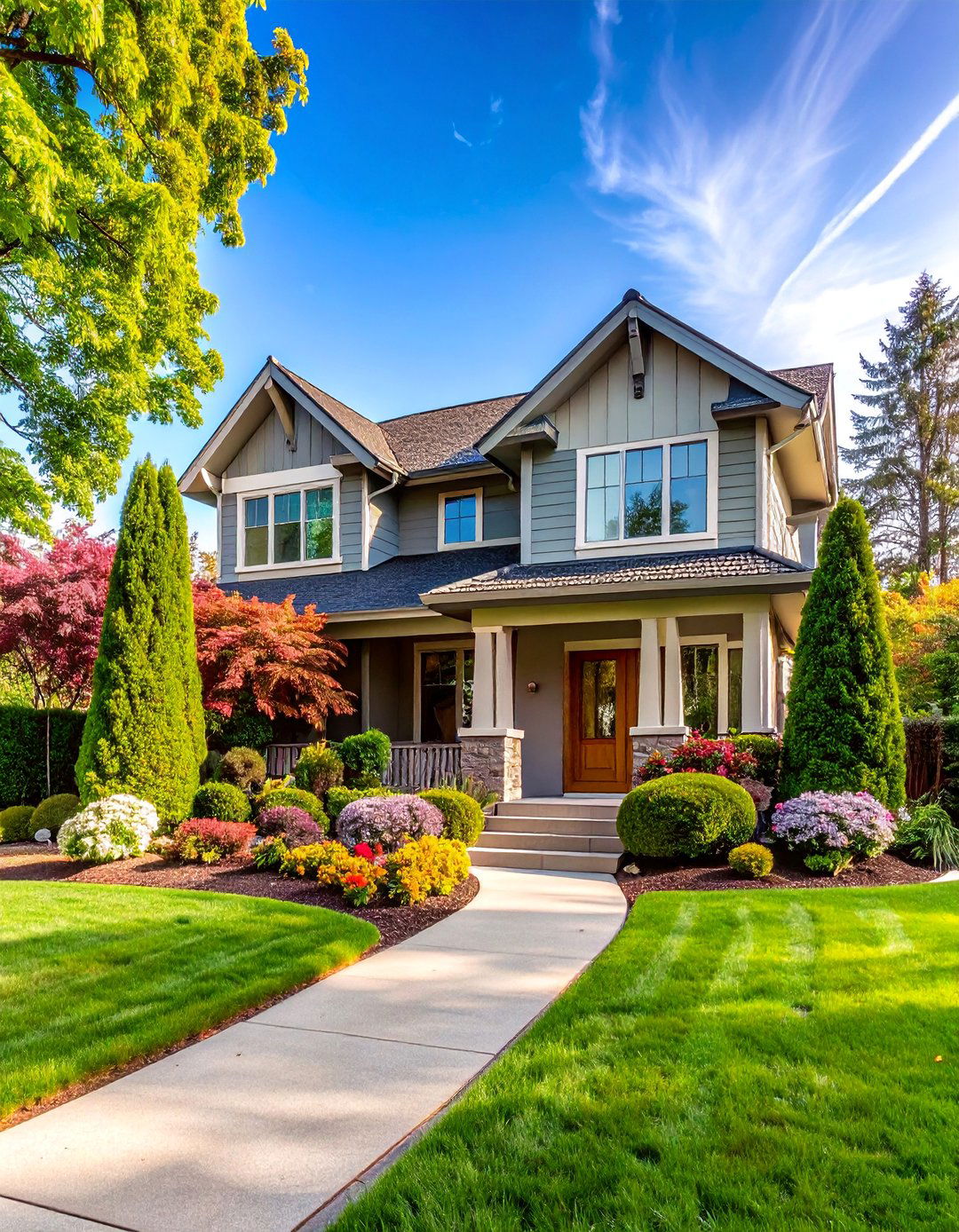
Design bold landscape features using evergreen plants with strong architectural qualities that complement and enhance your home's design lines and proportions. This approach features specimen evergreens with distinctive forms, such as weeping conifers, columnar varieties, or plants with unusual branching patterns. The design emphasizes the sculptural qualities of individual plants while creating dramatic focal points that command attention. Strategic placement ensures that these statement plants enhance rather than compete with architectural features of the home. Supporting plantings should complement the featured specimens without overwhelming their distinctive characteristics. This design style works particularly well with contemporary architecture and creates landscapes with strong personality and memorable character. Proper plant selection ensures that the architectural qualities are maintained throughout the plant's mature development, creating long-term design success.
20. Low-Maintenance Evergreen Groundcover
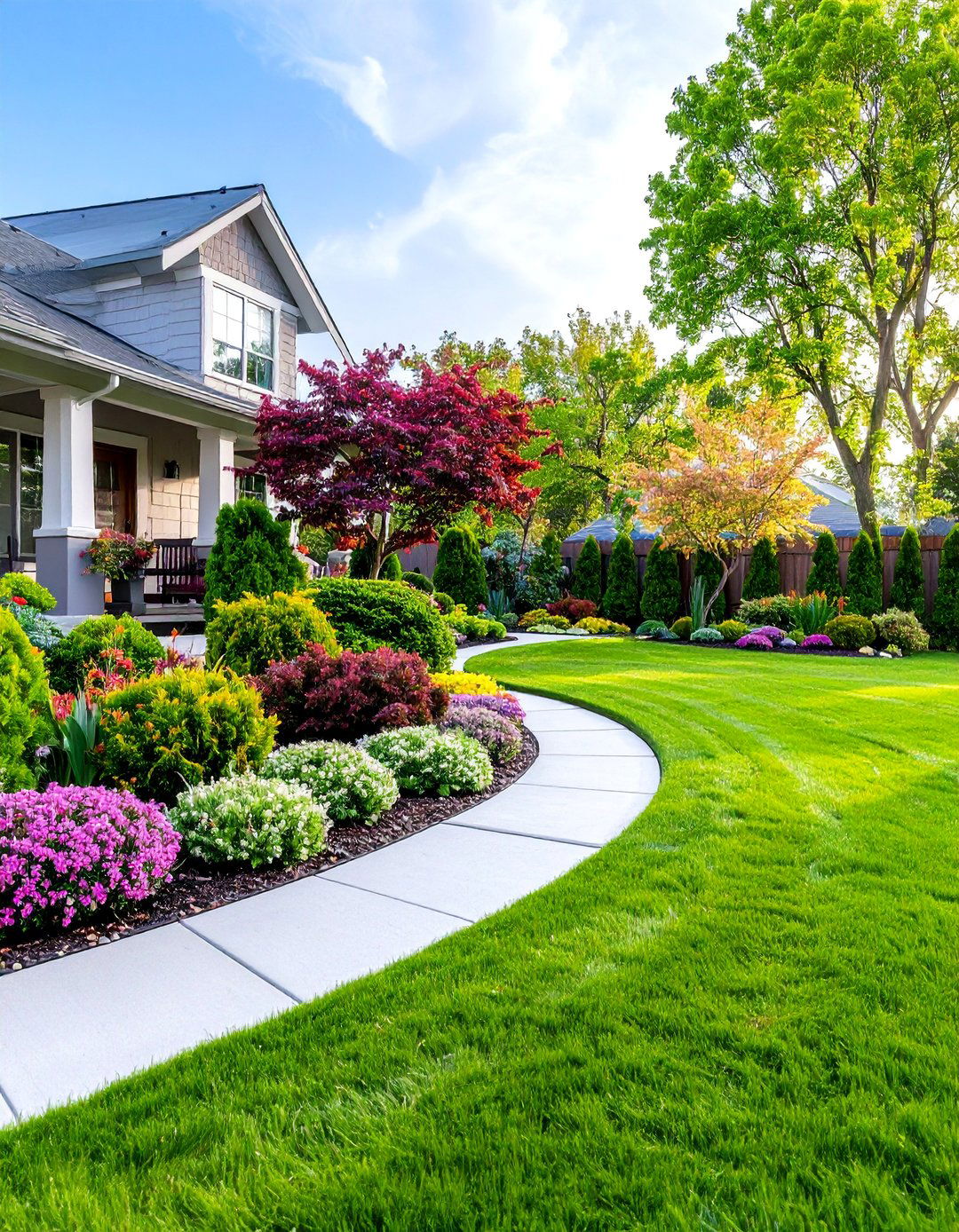
Replace traditional lawn areas with evergreen groundcover plants that provide year-round beauty while eliminating mowing and reducing maintenance requirements significantly. This design uses spreading evergreen plants like juniper, pachysandra, or vinca to create living carpets that suppress weeds and provide consistent coverage. Different groundcover species can create patterns or define different areas within the front yard while maintaining the low-profile appearance. This approach works particularly well in areas with challenging growing conditions, steep slopes, or heavy shade where traditional lawn grass struggles. The evergreen groundcovers provide habitat for beneficial insects while creating attractive surfaces that remain beautiful throughout the year. Strategic placement of taller evergreen accents adds vertical interest without compromising the overall low-maintenance character of the design. This solution particularly appeals to environmentally conscious homeowners seeking sustainable landscape alternatives.
21. Evergreen Color Gradient Display
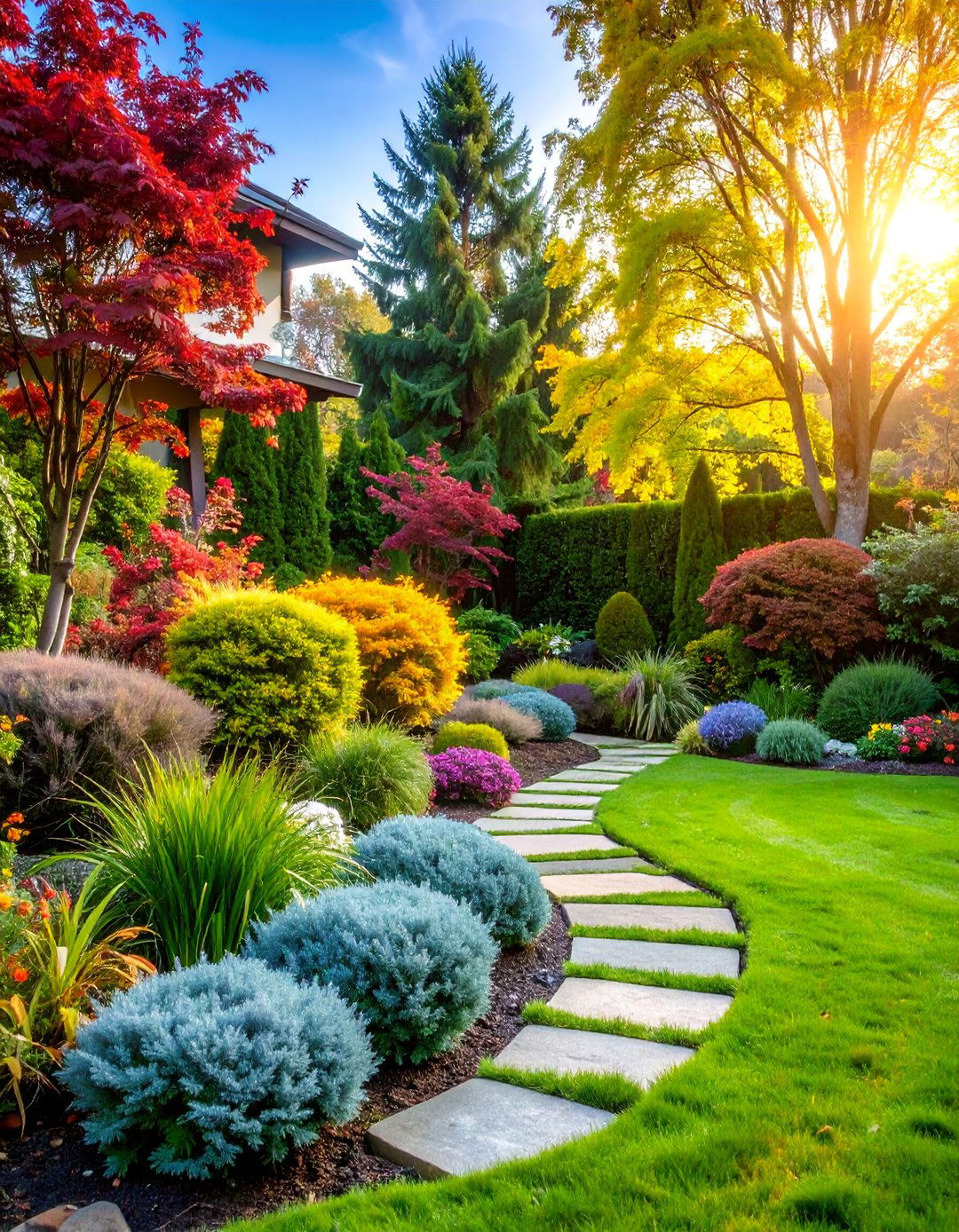
Create sophisticated color transitions using evergreen plants with different foliage colors arranged in gradual progressions from light to dark or cool to warm tones. This design technique uses the natural color variations in evergreen foliage to create artistic displays that change subtly with viewing angle and lighting conditions. Plants with silver, blue, gold, and deep green foliage are arranged to create smooth color transitions that guide the eye through the landscape. This approach requires careful plant selection and spacing to achieve the desired gradual color shifts while maintaining healthy growing conditions for each species. The resulting landscape provides sophisticated color effects that remain consistent throughout the year while creating unique beauty that changes with seasonal light conditions. This design style works particularly well in formal settings and demonstrates advanced understanding of plant characteristics and landscape composition principles.
22. Smart Technology Evergreen Garden

Integrate modern technology with evergreen landscaping to create efficient, sustainable landscapes that respond automatically to environmental conditions while maintaining beautiful appearance. This design incorporates smart irrigation systems that adjust watering based on weather conditions and soil moisture levels, ensuring optimal plant health while conserving water. Automated lighting systems highlight evergreen features during evening hours, extending the landscape's visual impact beyond daylight hours. Weather monitoring sensors provide data that helps optimize plant care and maintenance timing, while app-controlled systems allow remote monitoring and adjustment of landscape systems. This approach appeals to tech-savvy homeowners who appreciate efficiency and precision in garden management. The evergreen plants provide the permanent structure while technology enhances their performance and extends their visual impact throughout daily and seasonal cycles.
23. Evergreen Sensory Garden Experience
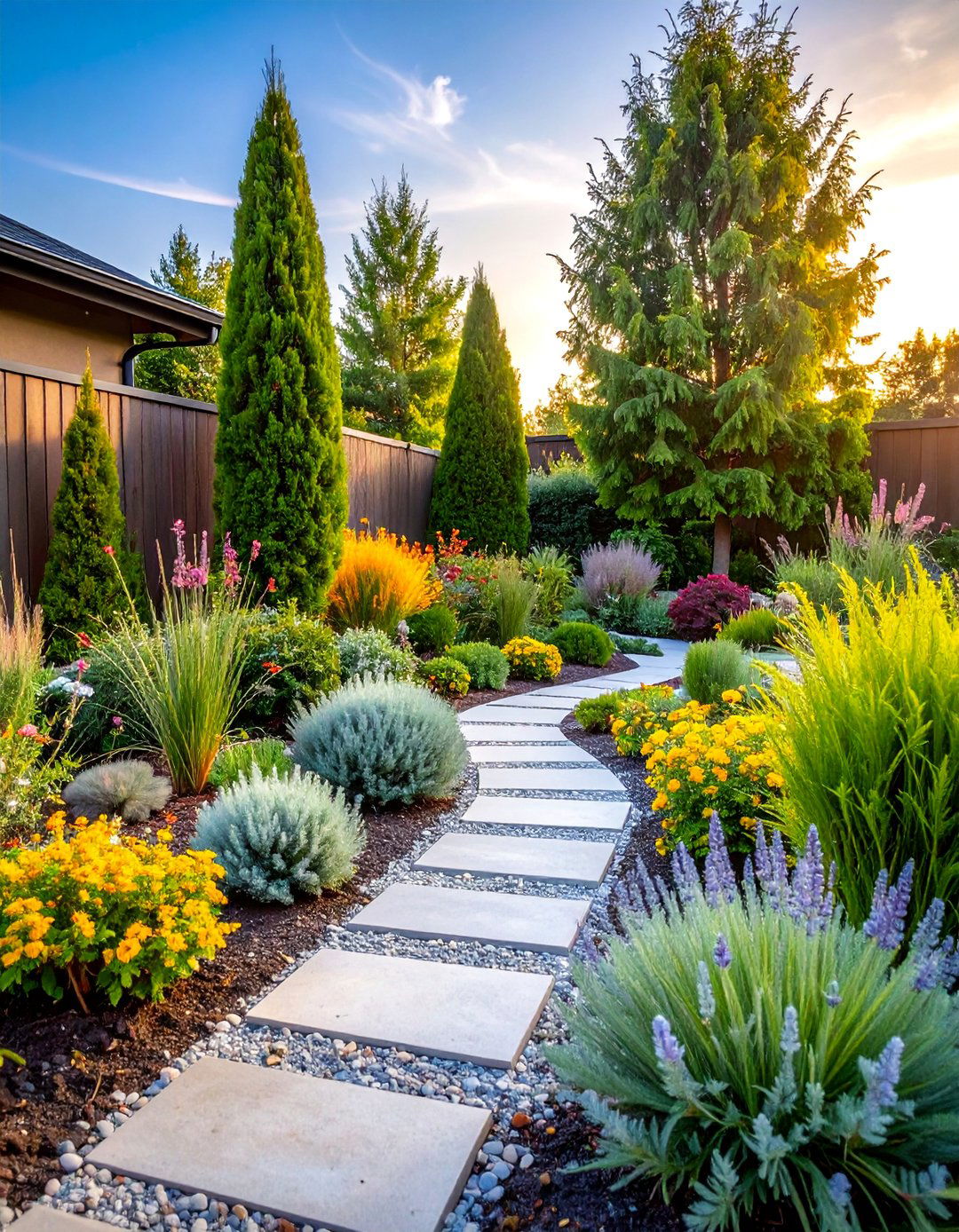
Design a front yard landscape that engages multiple senses using evergreen plants selected for their aromatic foliage, interesting textures, and seasonal characteristics that provide year-round sensory interest. This approach features plants like aromatic conifers, textured foliage varieties, and species that produce interesting sounds when moved by wind. The design includes pathways that encourage close interaction with plants, allowing visitors to experience their fragrances and textures directly. This style works particularly well near entrances where the sensory experience creates memorable first impressions and welcoming atmospheres. The evergreen selection ensures that sensory elements remain available throughout the year, while strategic placement maximizes the impact of aromatic and tactile qualities. This design approach creates deeper connections between people and plants while demonstrating the diverse qualities that evergreen species can provide beyond their visual appeal.
24. Evergreen Storm-Resistant Landscape
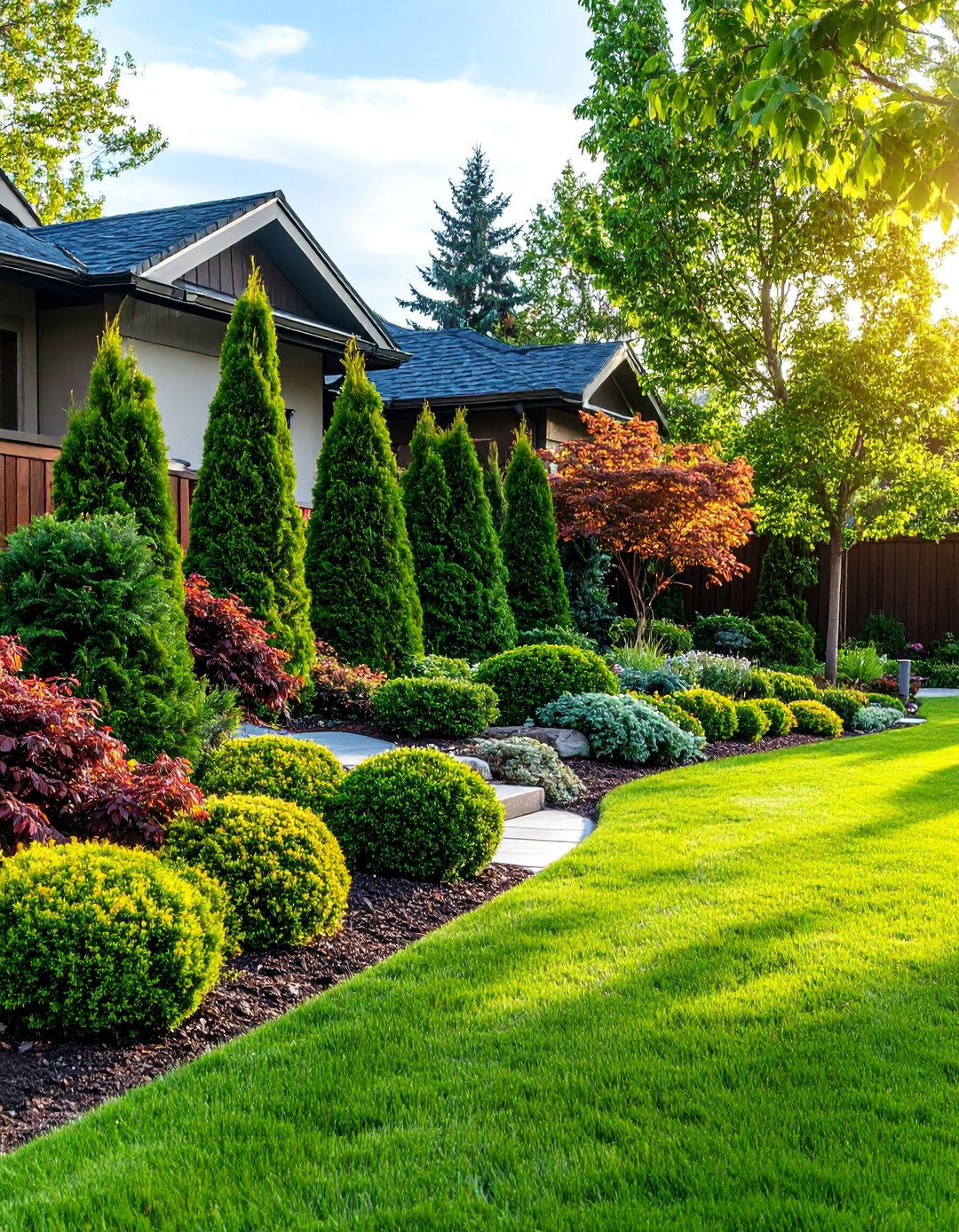
Create resilient front yard landscapes using evergreen plants selected for their ability to withstand severe weather conditions while maintaining attractive appearance and protective qualities. This design emphasizes deep-rooted evergreen trees and shrubs that provide windbreaks and help prevent storm damage to homes and other landscape elements. Plant selection focuses on species known for strong wood, flexible branching, and recovery capabilities after storm events. Strategic placement creates protective barriers around vulnerable areas while maintaining attractive landscape composition. This approach particularly benefits regions prone to hurricanes, severe thunderstorms, or high wind conditions. The evergreen selection provides year-round protection while creating beautiful landscapes that serve multiple functions. Proper spacing and maintenance ensure that protective qualities develop over time while preventing overcrowding that could increase storm vulnerability.
25. Contemporary Mixed-Material Evergreen Design
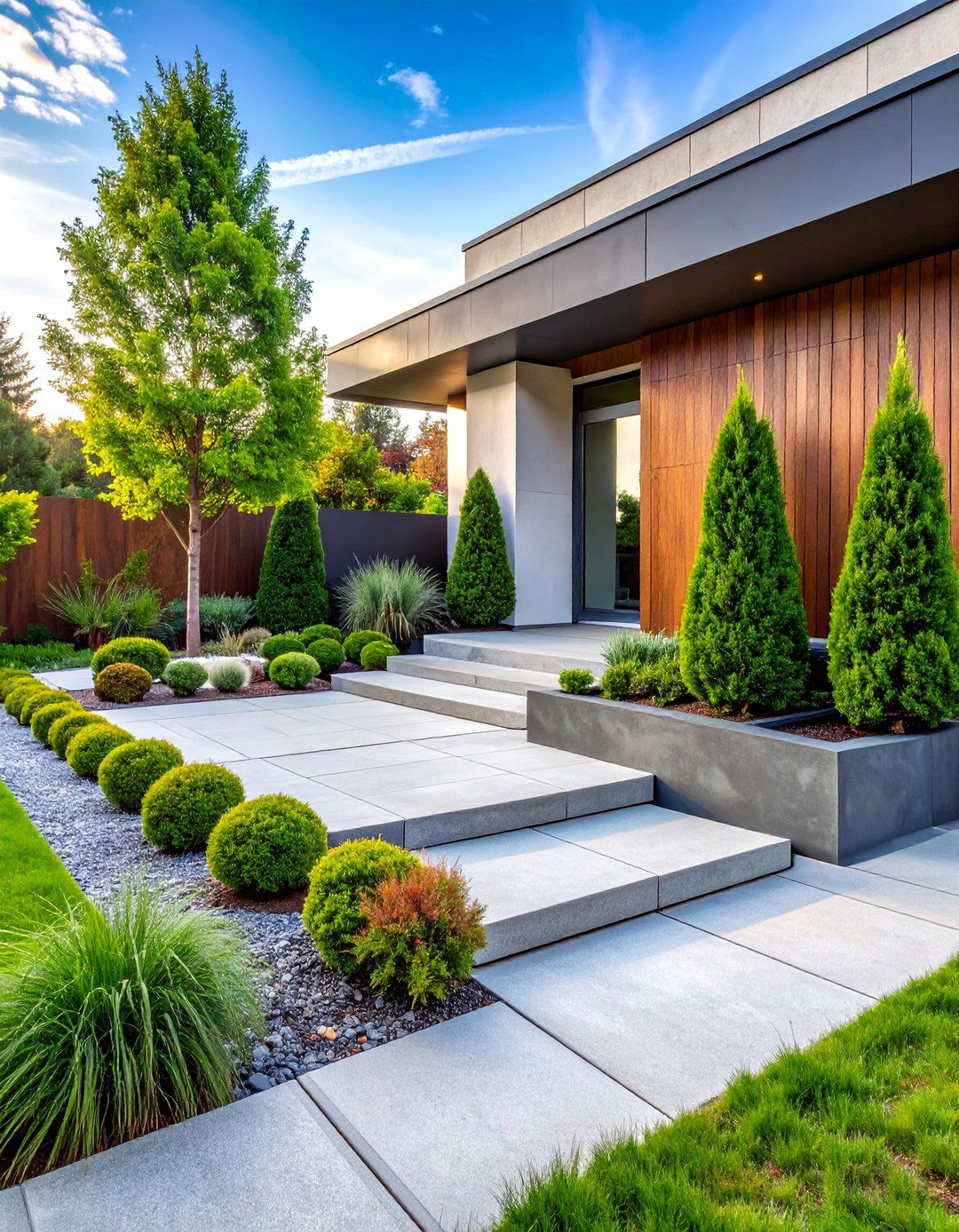
Combine evergreen plantings with modern hardscape materials to create striking contemporary landscapes that emphasize the contrast between natural and manufactured elements. This design uses materials like corten steel, concrete, glass, and composite decking to create geometric frameworks that contain and display evergreen plants. The contrast between organic plant forms and rigid manufactured materials creates dynamic visual tension that defines contemporary landscape style. Strategic lighting enhances both plant and material qualities during evening hours, creating dramatic effects that extend the landscape's impact beyond daylight hours. This approach works exceptionally well with modern architecture and appeals to homeowners who appreciate innovative design solutions. The evergreen plants provide the natural element while modern materials demonstrate current design trends and technological capabilities. Regular maintenance preserves both plant health and material appearance for long-term design success.
Conclusion:
Front yard evergreen landscaping offers unlimited creative possibilities for enhancing your home's curb appeal while providing practical benefits like privacy, wildlife habitat, and reduced maintenance. These 25 design approaches demonstrate how evergreen plants can serve as the foundation for landscapes ranging from traditional formal gardens to contemporary sustainable designs. Success depends on selecting appropriate plant varieties for your climate and site conditions, while considering your home's architectural style and personal preferences. Whether you choose dramatic architectural specimens or subtle naturalistic arrangements, evergreen plants provide the permanent structure that makes landscapes beautiful throughout every season.



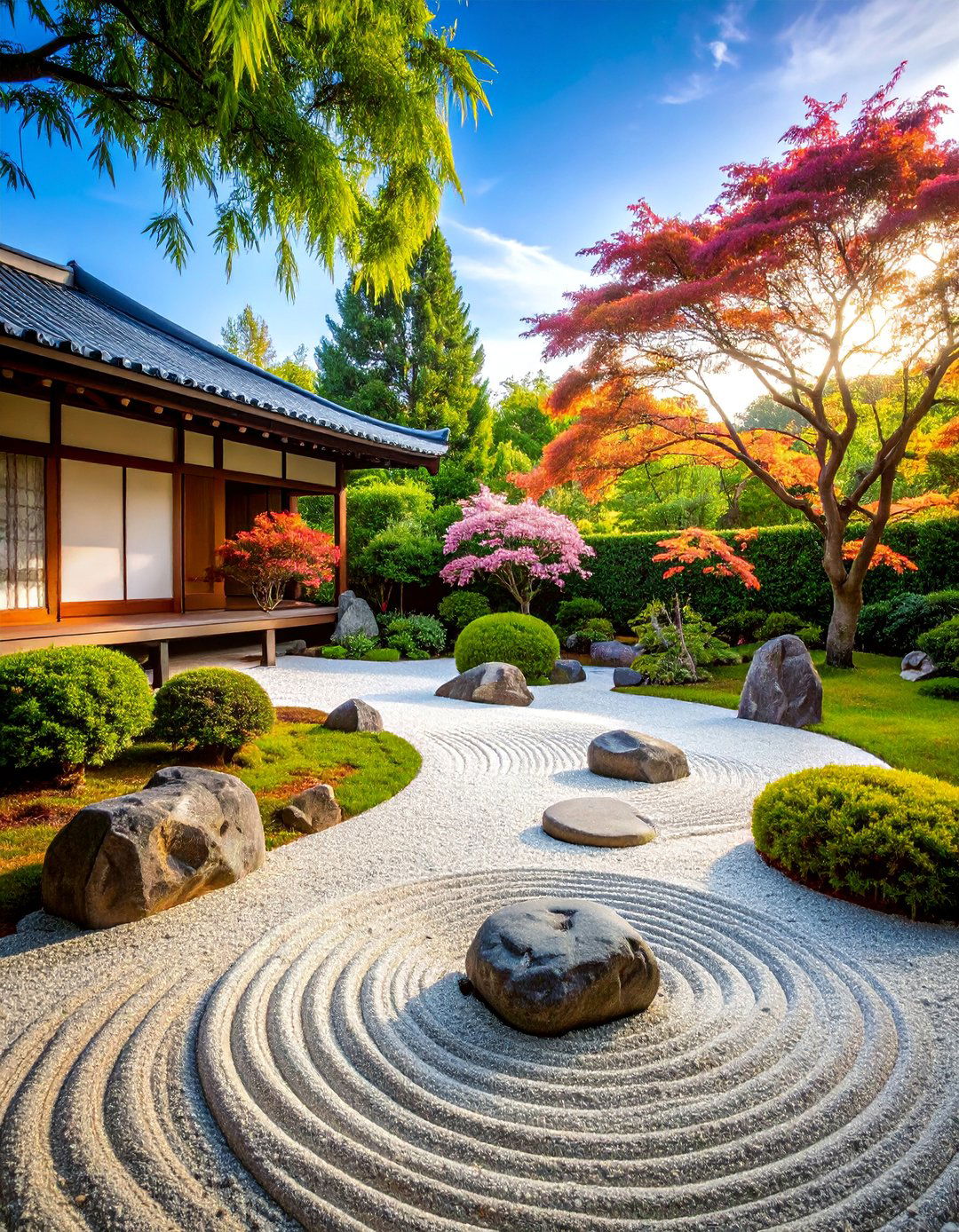
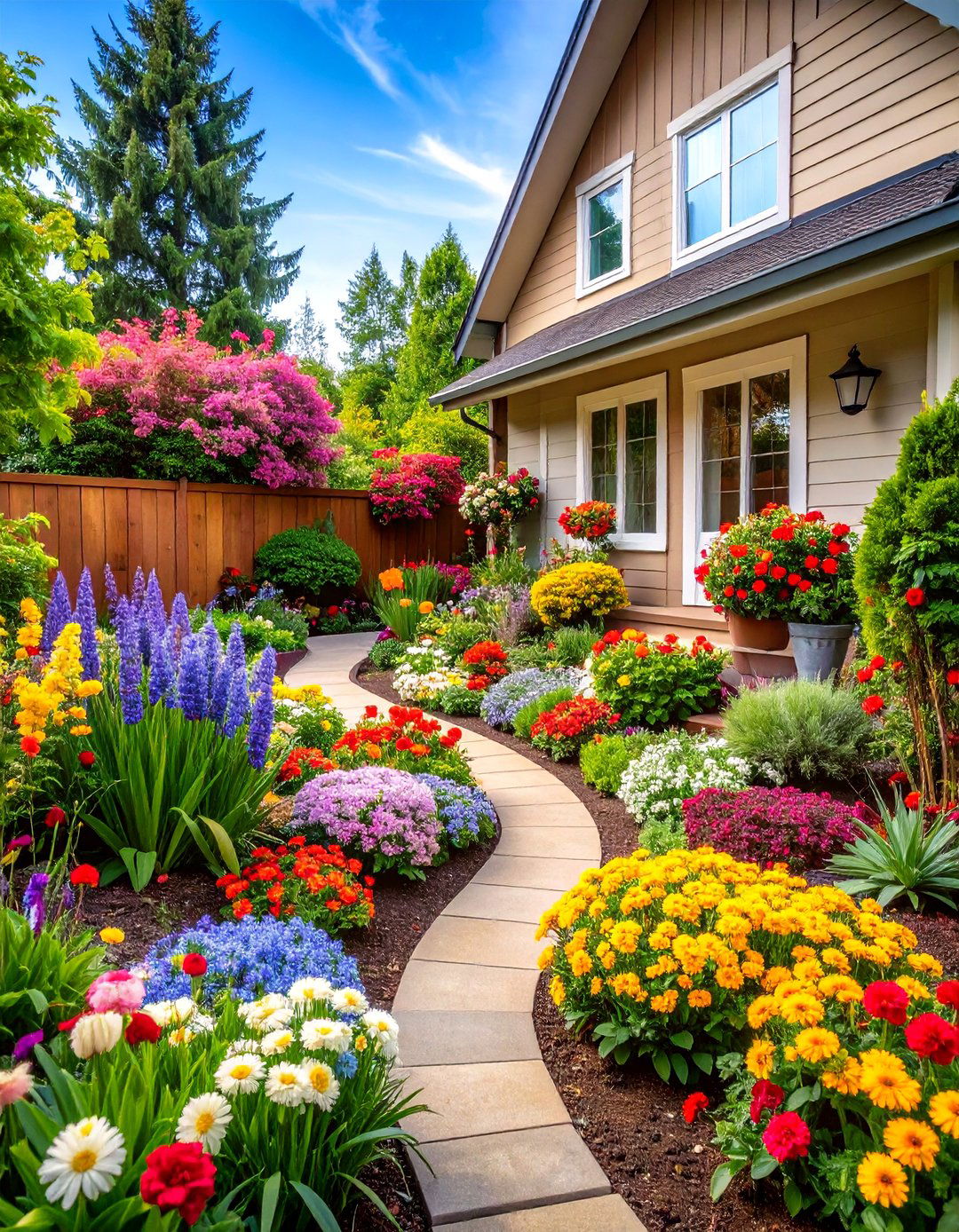


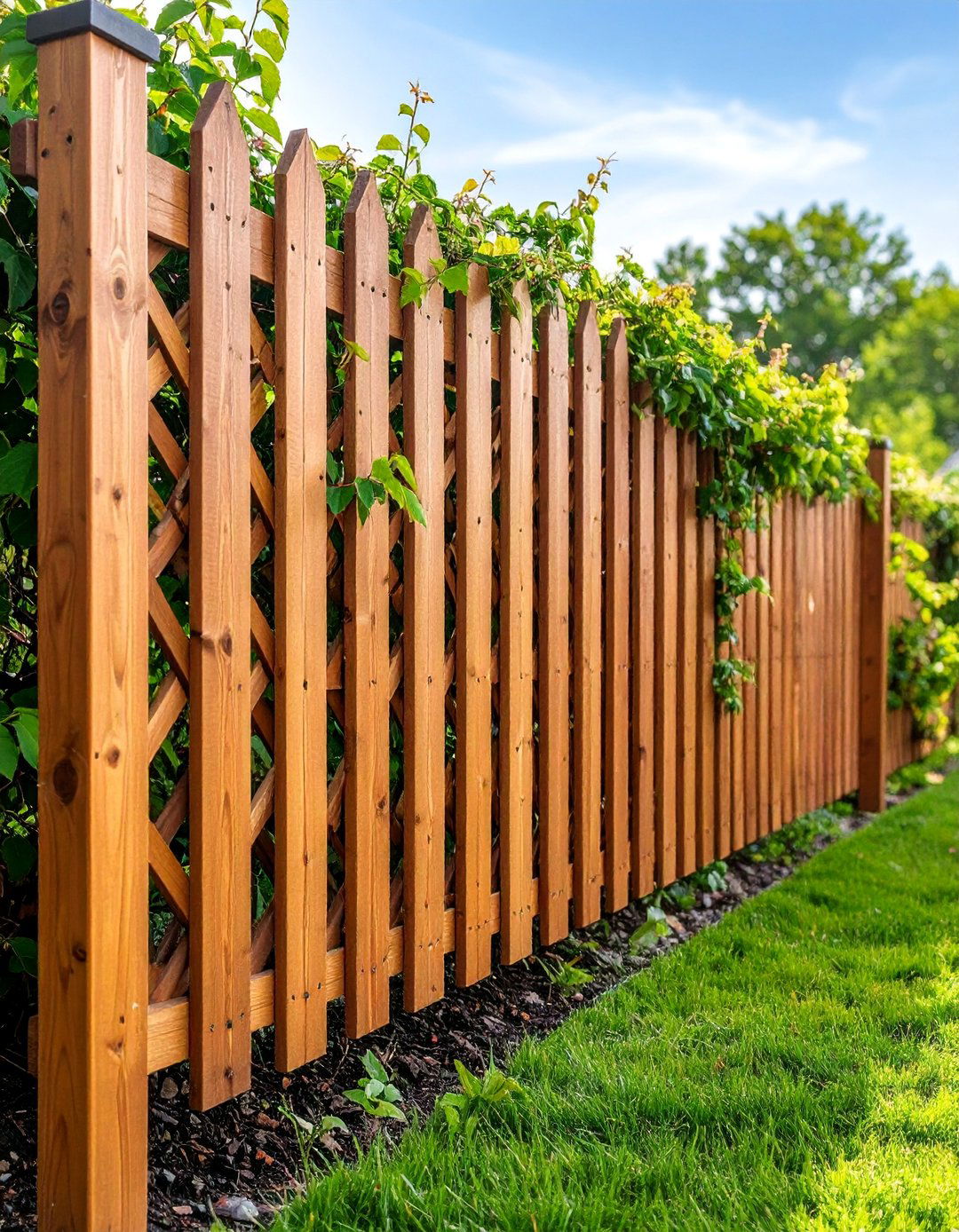
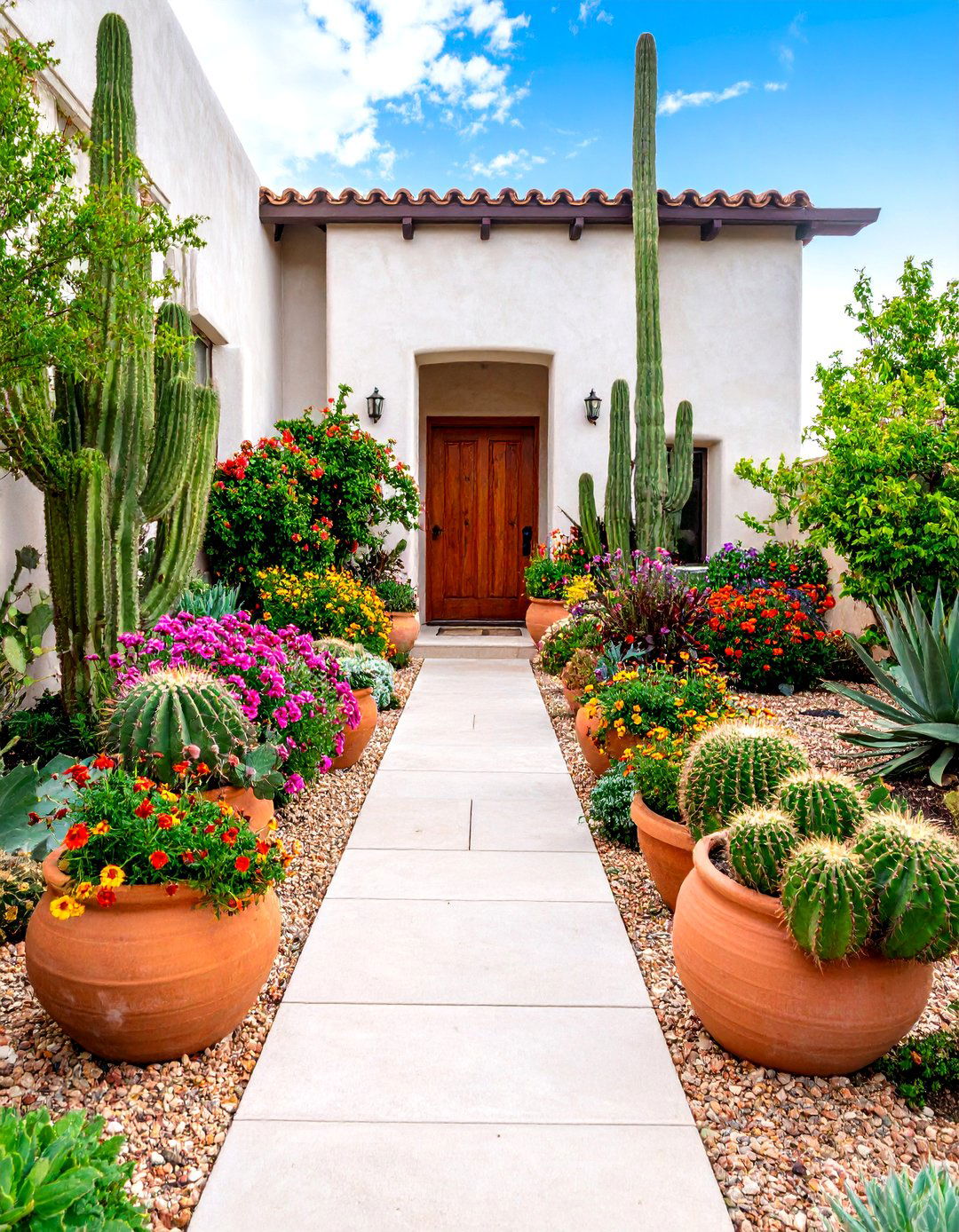
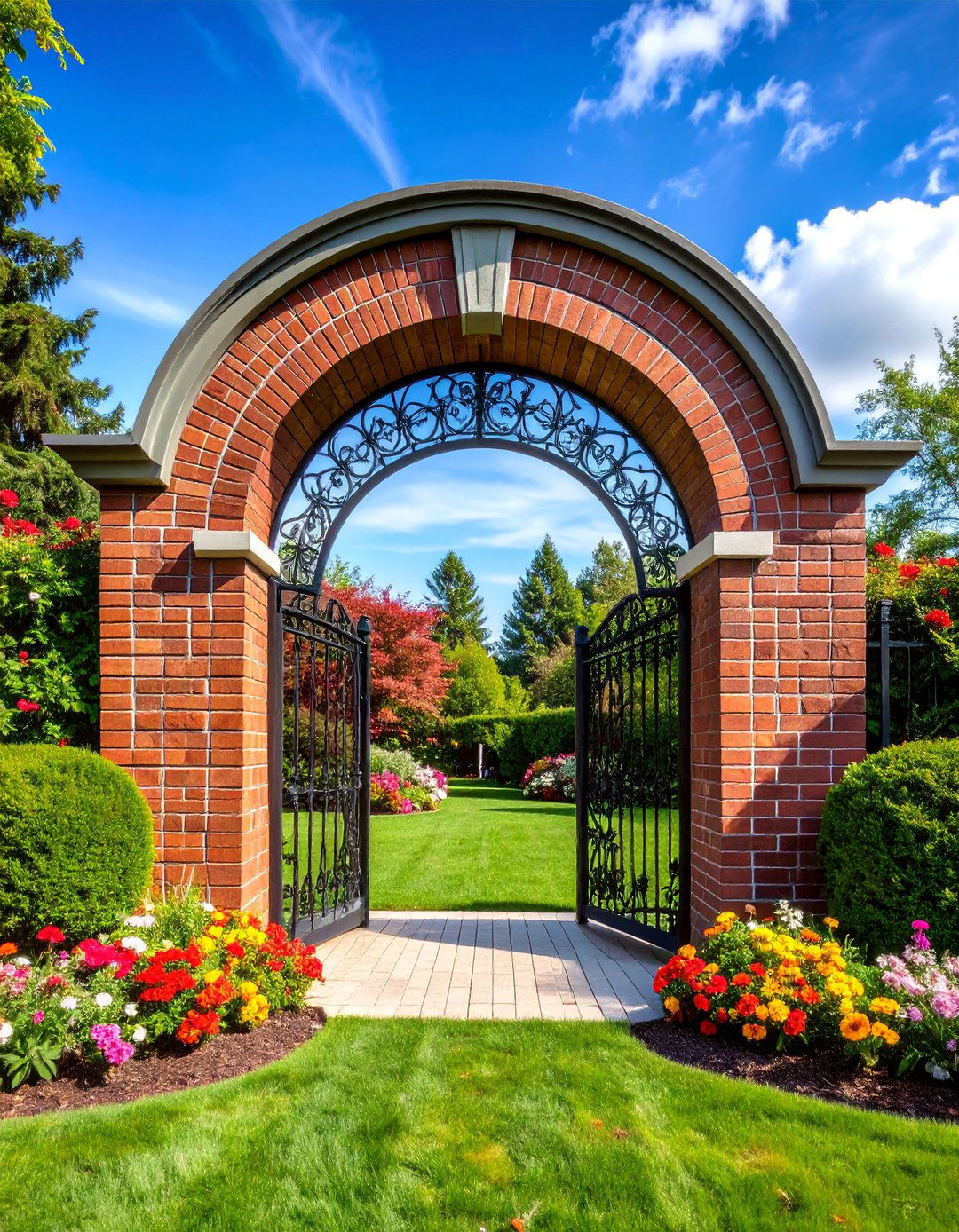

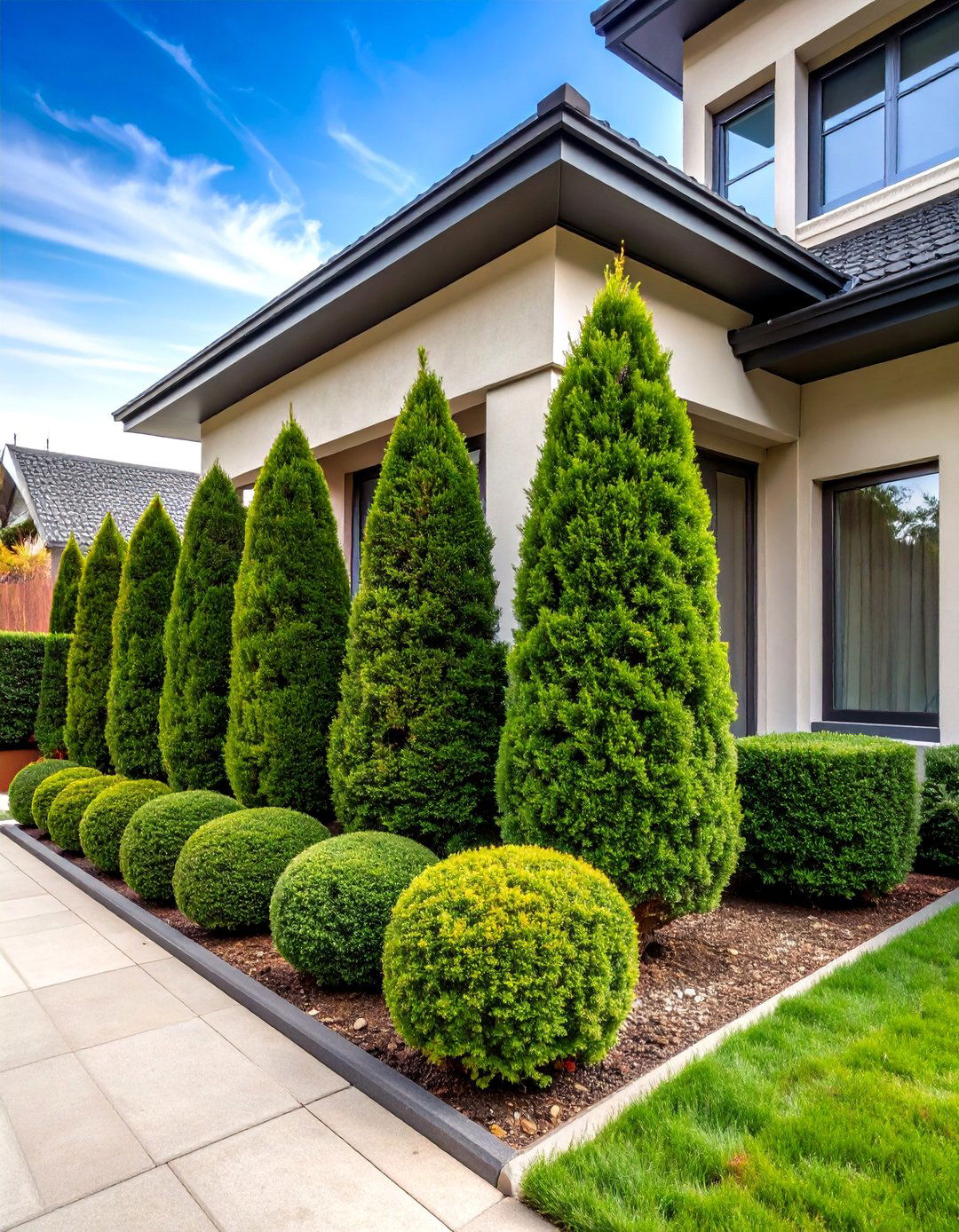
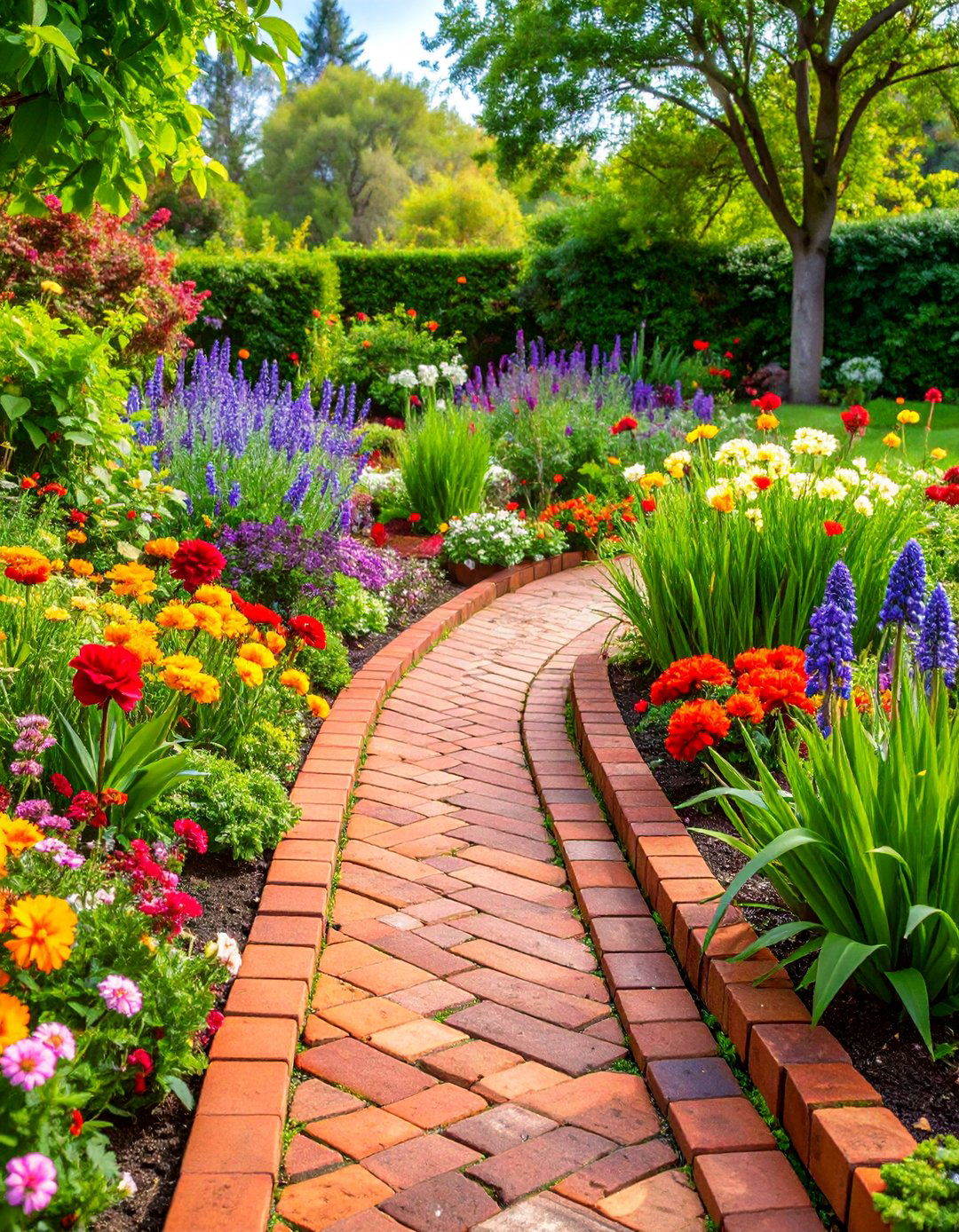


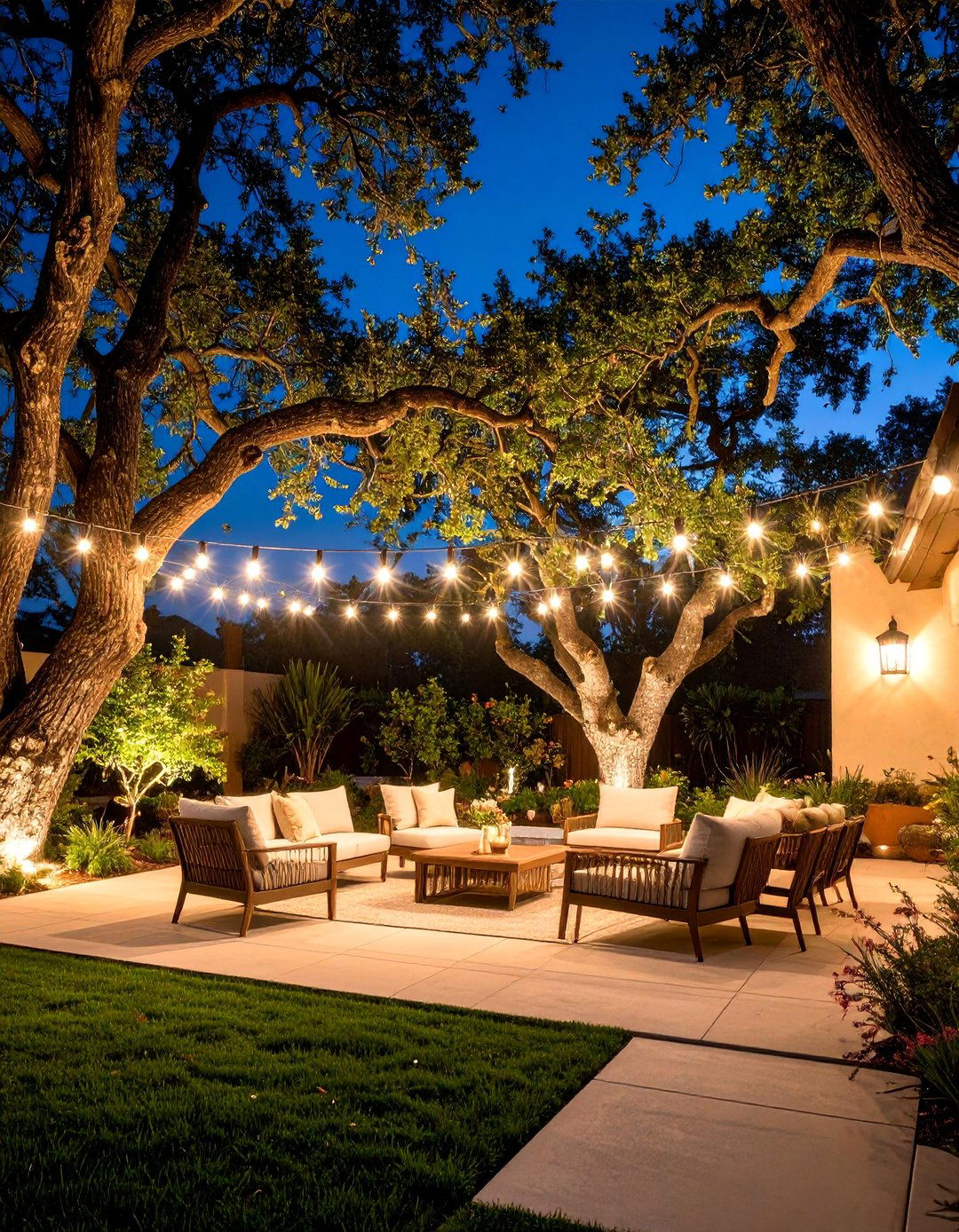

Leave a Reply